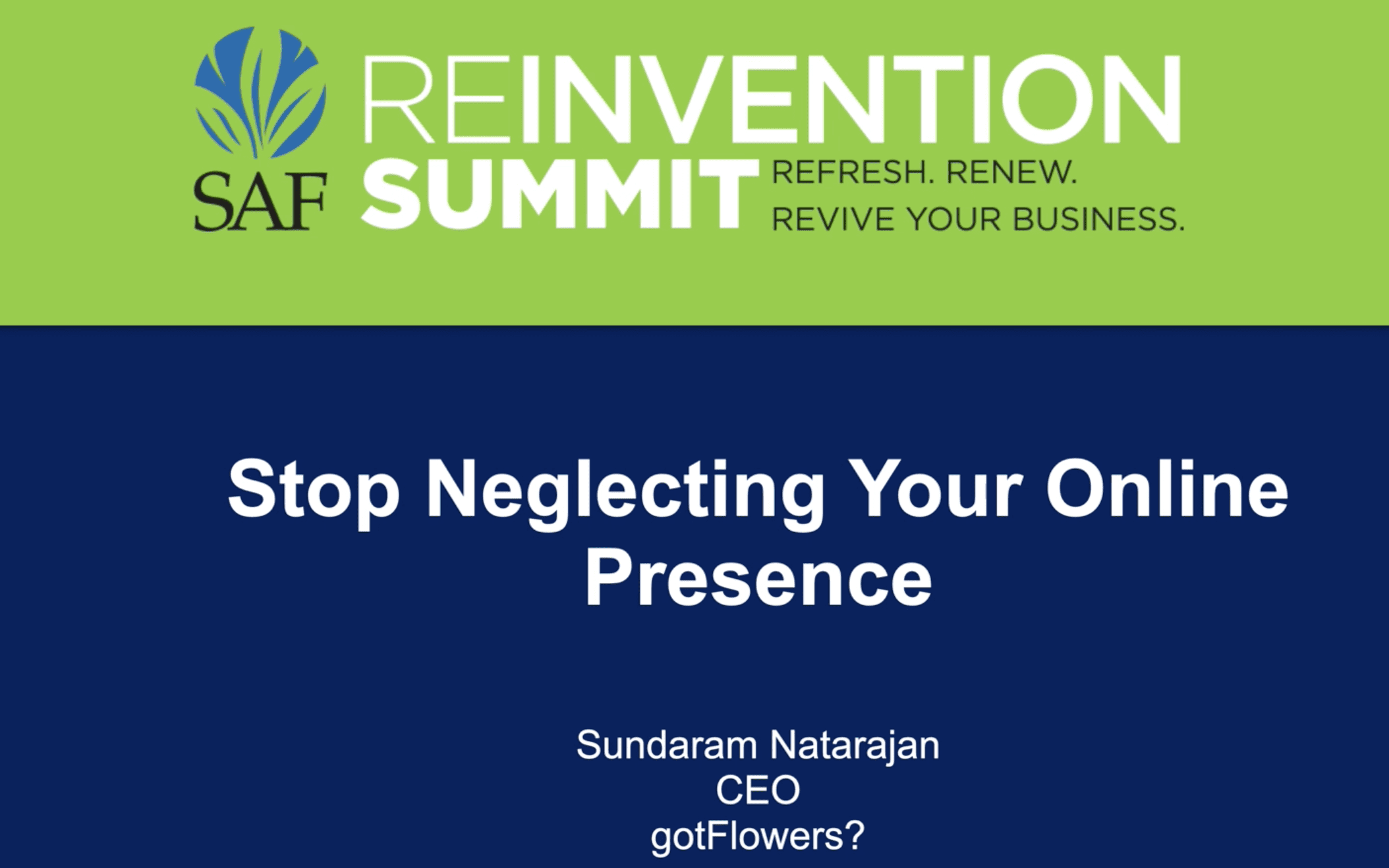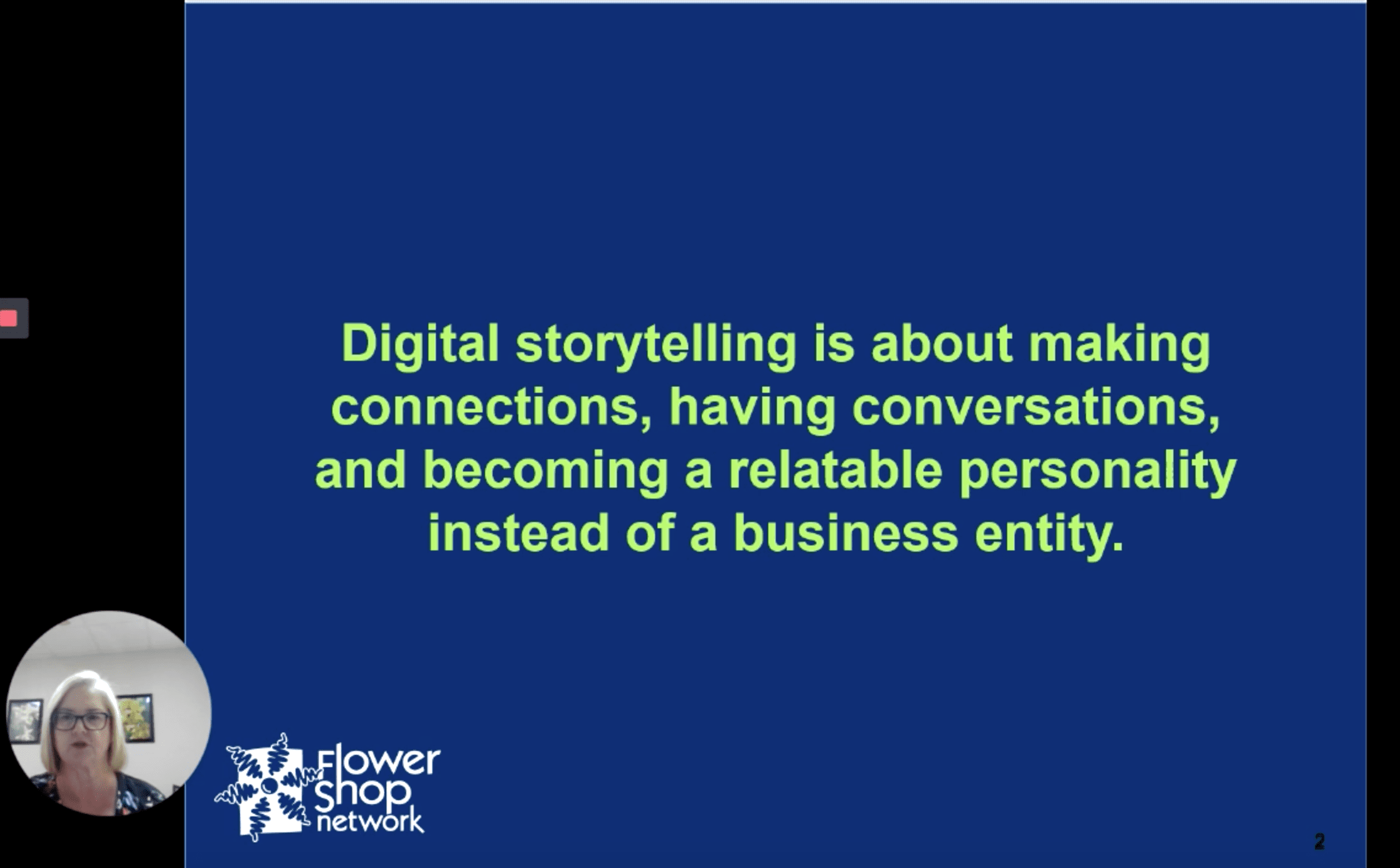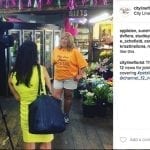 Having a robust and competitive online presence is more important than ever. That’s why the Society of American Florists devoted an entire day to the topic (Wednesday, July 29) during its Reinvention Summit. In five separate presentations, followed by question-and-answer sessions, digital marketing pros shared their expertise on topics ranging from making your website work for you to dynamic strategies with social media.
Having a robust and competitive online presence is more important than ever. That’s why the Society of American Florists devoted an entire day to the topic (Wednesday, July 29) during its Reinvention Summit. In five separate presentations, followed by question-and-answer sessions, digital marketing pros shared their expertise on topics ranging from making your website work for you to dynamic strategies with social media.
“The pandemic has forced a lot of new people to start shopping online,” noted one of these experts, Sundaram Natarajan, CEO of GotFlowers, providers of a cloud-based point-of-sale system for retail florists. “Flower shops are now pressured to compete. But if you invest in the online business, any flower shop can compete with the biggest guys on the internet and get your fair share of the business.”
Here are three tips from the day’s programming that you can put into action at your business.
Focus on storytelling. On your website as on social media, content is king — original, engaging content. And creating that content is something only you can do. You may get help from employees or even from professionals, but it’s important that your content be unique to you and authentic to your business.
For many florists, the idea of writing about themselves and what goes on in their shops, taking photos, even appearing in videos, is intimidating. Don’t let it be, said Jamie Adams, marketing director for Flower Shop Network: “This is digital storytelling, and it’s no different than what you do every day in your store. Every day, you make connections with customers. You build rapport by talking to them, answering their questions.”
Those questions and answers are a good place to start with creating digital content, said Adams. Write them down and incorporate that content into your website on an FAQ page, in your “About Us” section—or even as a part of your product descriptions, including descriptions of daily and weekly specials.
Create unique visuals. Eye-catching photos are crucial to your efforts, and here florists are lucky: you work with beauty every day. Your photos of arrangements should meet a minimum standard of professionalism, showing the whole design in a clean, well-lit area with a neutral background. No one will fault you for photos that look too pretty.
But authenticity is important here too, said Adams. You need to showcase your own design expertise: “We all use stock photos from our various website providers, and there’s nothing wrong with that, but enhancing those photos and products with what you create will help tell your brand story better.”
You want customers to see your own work, of course. But there’s another reason for that as well: search engines can detect duplicate content, said GotFlowers’ Natarajan. “The challenge faced by the search engines is, which is the original? Who should be listed first? It doesn’t help them give you priority when they try to match a buyer to your business.”
In addition, search engines visit your website regularly, looking for new content. “If you upload new designs each week, you will see that not only does your web traffic improve, but your ranking also improves in the search results,” said Natarajan.
Get savvy about search. Potential new customers can arrive at your site in a number of ways — by typing the URL directly into their browser, for example, or via a link from another site. The best way, however, is via what is called “organic search.” This is what results when consumers enter a general search term, such as “florist in ,” into a search engine like Google or Bing.
Organic search drives the lion’s share of traffic to websites, according to Teleflora’s Kirby Ryan, senior director of eFlorist: “The typical site sees well over 50 percent of their traffic come from organic search on engines like Google or Bing. Organic visits also generally contribute to a significant share of online orders—more than half in many cases.”
The trick is to get a high ranking, so that your business appears high up in the list of results. “In highly competitive searches, the difference in click volume between position 1 and position 2 can be as much as 55 percent of the total traffic volume,” Ryan explained, “with volume falling off the further you move down the page.”
So, the success of your website depends mightily on what you do to achieve search engine optimization (SEO). And that in turn is all about understanding the complex algorithms used by the search engines (and especially the dominant search engine, Google) to rank results.
Those algorithms are constantly changing. Some of the factors they rely on are technical. Unless you are quite tech-savvy, they really depend on your website’s architecture as set up by your provider. How well does the page load? Is it set up in a way that’s easy for the search engine to understand? Is it fast, responsive, and secure?
In the past, website designers have tried to trick the search engines with fraudulent techniques such as doorway pages (using multiple, relatively empty pages to attract traffic) and keyword stuffing, Ryan explained. But search engines are constantly being refined to sniff out these strategies, and in the end will detect and even penalize them in the rankings.
While you may rely on a professional service to keep track of all these factors, it helps to be aware of them and to work with your provider. Some of the elements that search engines respond to are present in code, underneath the surface, not immediately visible to you or to the user. Nonetheless, they tie in with your own specific offerings and expertise. Every image on your website should be “tagged” with a unique description that is specific to your brand.
Look for more coverage of the tips shared during SAF’s Reinvention Summit in the September issue of Floral Management magazine.
Bruce Wright is a contributing writer for the Society of American Florists.









